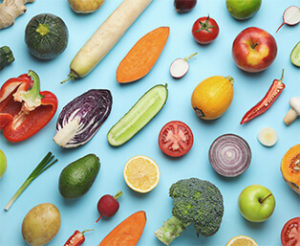To Your Health
May, 2008 (Vol. 02, Issue 05)
Lose It the Safe Way
By Dr. Donald L. Hayes
Undergoing surgery to alter the way you digest your food in the hopes you’ll lose weight – not a decision to take lightly. The most common surgeries today for obesity are gastric bypass and a procedure known as adjustable gastric banding. But gastric bypass and banding procedures have many associated risks and long-term consequences. These procedures tend to work best if the patient also agrees to lifelong behavioral and dietary changes, including lifelong vitamin supplementation.
You might be thinking, “If I’m going to commit to lifelong dietary changes and vitamin therapy anyway, why should I add the pain, expense and risk of either having my stomach surgically divided into two parts using a stapler or an operation whereby a restrictive band goes around the top of my stomach?”
Good point.
Most “Diets” Don’t Work
A panel of weight-loss experts from the National Institutes of Health Nutrition Committee agreed that most diets don’t work, suggesting only 3 percent of those who lose weight on a diet keep it off for five years. They went on to say that the yo-yo pattern of going on a diet – losing some weight and then adding it back on – may be more harmful to a person’s health than losing weight in the first place. People who fail on diets tend to blame themselves for lack of willpower, when the problem clearly is insufficient scientific information to help them make better and more successful eating and lifestyle choices.
A Natural Alternative
A better alternative to starting a diet and then stopping when you hit a desired weight is to develop a healthy and natural way of eating on a consistent basis. The average American consumes almost 40 percent of their daily calories as fat. Leading commercial diet companies reduce their clients’ fat consumption to approximately 30 percent by reducing portions sizes, but these small meals often leave people feeling hungry and deprived. The truth is if you simply reduce your daily fat intake to about 20 percent or less, you can eat more frequently, eat a greater quantity of the right types of foods, never feel hungry and still lose weight.
Not a “Low-Fat” Diet
Oddly enough, I am not recommending a “low-fat” diet. Americans have managed to become really fat over the past 30 years on low-fat diets. In fact, many scientists date the current epidemic of obesity and diabetes to 1977 dietary guidelines that gave a take-home message of “Eat more low-fat foods.
And that’s exactly what Americans did. They began binging on low-fat processed and refined foods as a way of avoiding the evils of eating too much fat. Unfortunately, they never cut down on their total consumption of fatty meats and dairy products – they just ate in addition to their extra “low-fat” foods. What the guidelines should have said was, “Eat less high-fat meats and consume fewer fatty dairy products.'
But because the guidelines weren’t clear and Americans love to be given a guideline to eat more of anything (except fruits and vegetables), most of them ate like crazy, resulting in 66 percent of American adults being overweight and only 9 percent eating the recommended five to nine servings of fruits and vegetables a day.
We don’t exercise enough. We overeat. We eat more of the foods that are horribly unhealthy, and we are getting fatter because of it. As no surprise to anyone, total health care costs associated with being overweight exceed $90 billion a year.
The Fat You Eat Is the Fat You Wear
We don’t need to eat more low-fat foods – typically processed sweets and refined carbohydrates. We need to eat less high-fat meat and dairy products. Why? A fat calorie is different from a calorie of protein or carbohydrate. Fat has more than double the calories of either protein or carbs. When you reduce fat consumption (meat and dairy products) from 40 percent to 20 percent, you can eat almost one-third more food, yet consume the same amount of calories.
Your body must spend 10 times the energy to convert protein or complex carbohydrates from fruits and vegetables to body fat as it does to convert dietary fat to body fat. Only about 1 percent of protein or carbohydrates end up as body fat, because your body would rather use them up right away
than waste energy to store them. So, by keeping fat consumption low, your body will store less fat.
Your body only needs about 6 percent to 8 percent of calories as fat to make things like essential fatty acids, so consuming approximately 20 percent fat provides more than enough fat without giving you more than you need. It’s the excessive amounts of fat in your diet that lead to excess weight, heart disease and other illness.
Mom Was Right – Always Eat Breakfast
Always eat breakfast, even if you only have time to shake up a wholesome low-fat, high-power protein and vegetable drink mix and consume it as you run out the door. (See “Drink Your Greens,” March 2008 TYH.) In a study published in the Journal of Clinical Nutrition, overweight women who regularly skipped breakfast were divided into two groups. One group was asked to start eating a low-fat breakfast every morning; the other was asked to skip breakfast. After 12 weeks, the women who were eating breakfast lost significantly more weight than those who didn’t. Why? A good breakfast that contains all three macronutrients – protein, fruits and vegetables and healthy oils – gives you energy and reduces your hunger during the morning, so you feel less need to grab junk food later in the day.
Follow the 80/20 Rule
Remember, all calories are not the same. The eating plan I recommend is simple, and the 80/20 rule makes it work in the real world. Always make sure your diet is made up of at least 80 percent unrefined plant foods. You should treat processed foods, animal foods and dairy products as side dishes, contributing no more than 20 percent of your total caloric intake. If you desire these foods, use them occasionally or in very small amounts to flavor a vegetable dish.
If you do choose to eat meat and dairy, try to consume 12 ounces or less each week of fish, white-meat chicken or turkey. Eat beef as little as possible. If you desire dairy in your diet, use only fat-free dairy such as skim milk or nonfat yogurt, and limit it to 12 ounces per week.
The great news is you can eat unlimited daily amounts of salads, raw vegetables, steamed or cooked green vegetables, beans or legumes, and fresh fruit. In addition, you can have one serving of starchy vegetables or grains daily. Using the 80/20 rule means you are allowed to eat almost any kind of food, even a small cookie or candy bar, as long as all your other calories that day are from nutrient-dense, plant-based vegetation.
Keep in mind that being overweight is primarily due to how much fat you eat. Most fat comes from animal products, full-fat dairy products or oils. Oils are liquid fat; therefore, the more oil you consume, the more weight you will gain. Eat foods that are very low in fat and high in complex carbohydrates and fiber (fruits and vegetables). Avoid foods from animals as much as possible because they are high in fat and low in complex carbohydrates and fiber.
Donald L. Hayes, DC, is the author of such books as 7 Habits of Healthy Living,The 90-Day Food & Exercise Diary and The Healthy Living Cook Book.







